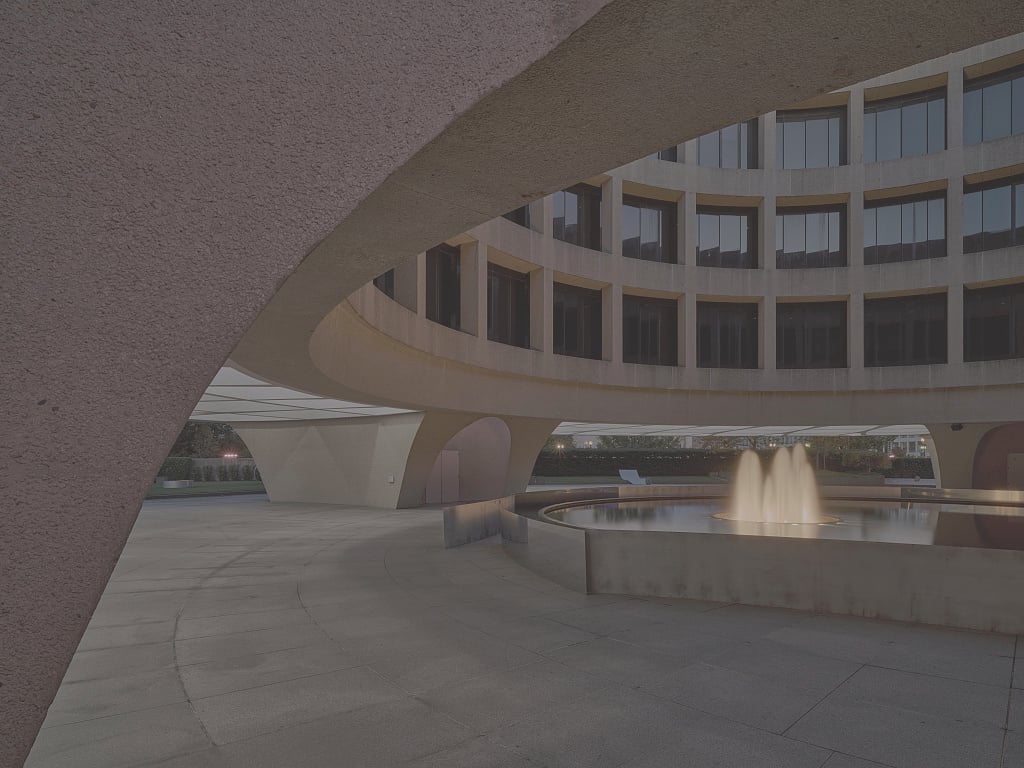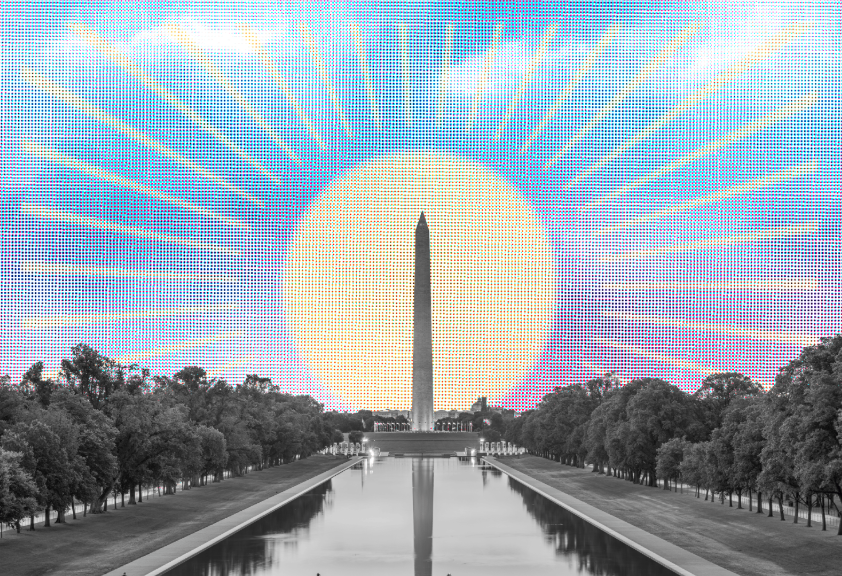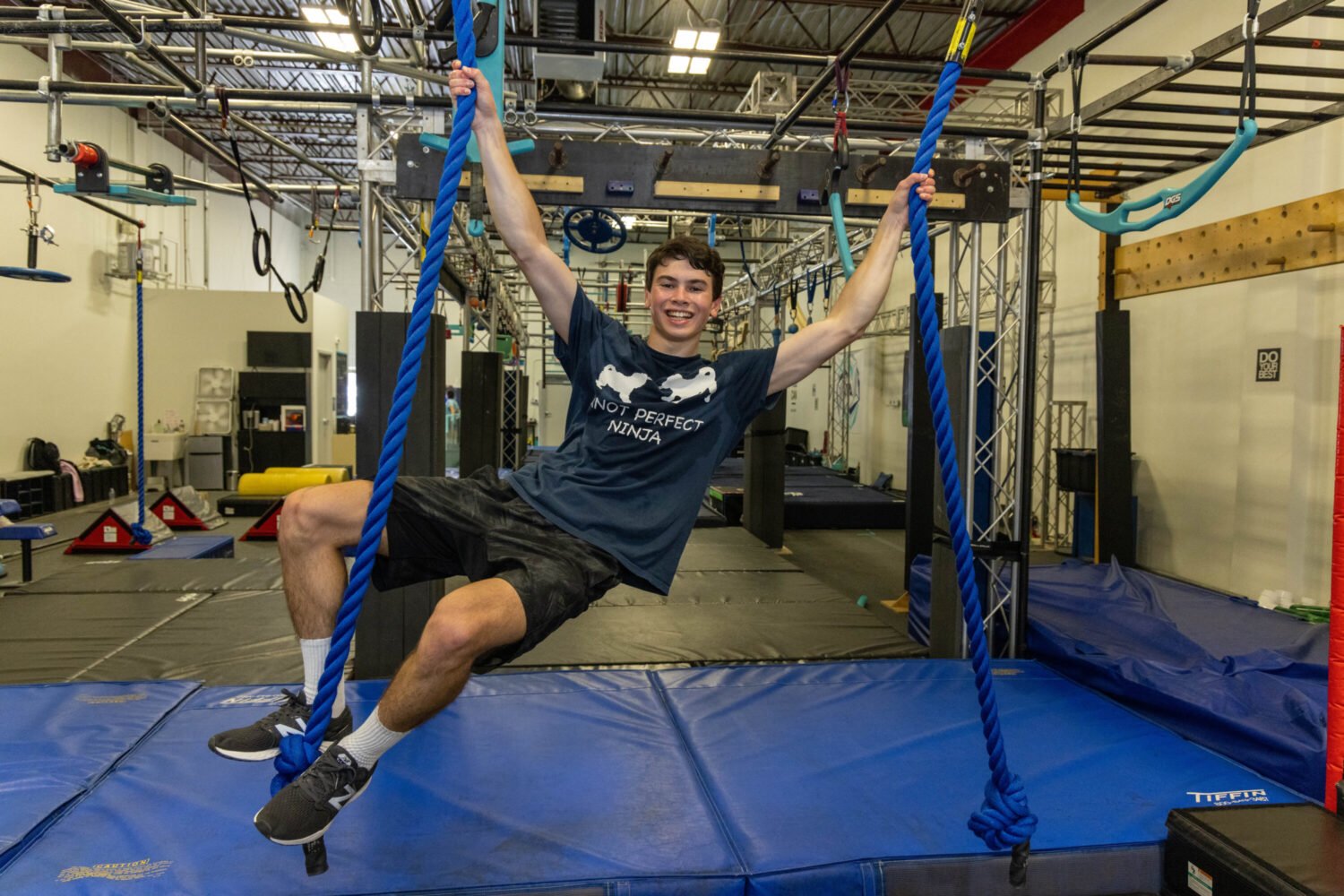10 9 8 7 6 5 4 3 2 1
Almost five decades have passed since a monkey named Miss Sam, stuffed into a space suit that made her look like Mr. Peanut, soared above the Atlantic Ocean as the sole passenger onboard a rocket. That was the last time a primate was blasted into space from Wallops Island.
From liftoff to splashdown, Miss Sam’s 2,000-miles-per-hour monkey business took only a few minutes, but the mission’s successful test helped clear the way for the May 5, 1961, suborbital flight of Navy commander Alan B. Shepard Jr., the first American in space.
Although Wallops Island—on the edge of the Delmarva Peninsula—belonged to NASA, the agency picked the Air Force’s Cape Canaveral facility in Florida as the launch pad for Project Mercury, the nation’s historic effort in the space race against the Russians.
Forever after, it seems, Wallops Island has been left behind in the exhaust of NASA’s more spectacular projects—landing men on the moon, building a space station, shuttling astronauts into orbit, sending robotic rovers to explore Mars—that turned the TV spotlight on the John F. Kennedy Space Center in Florida and the Johnson Space Center in Texas.
Under the wing of the Goddard Space Flight Center, the Wallops Flight Facility—once a hunting and fishing retreat—settled into a back-burner role in an area better known for its nearby annual Chincoteague pony swim. Despite a record of having launched more than 14,000 rockets beginning in 1945—13 years before there was a National Aeronautics and Space Administration—Wallops has subsisted on a diet of unmanned data-gathering vehicles, including sounding rockets and weather balloons.
Wallops is NASA’s cynosure for tracking orbital payloads and receiving meteorological information relating to the continent. And although it has never been used for this purpose, Wallops can boast that its 8,750-foot runway, usually reserved for winged-aircraft safety tests, is an approved shuttle emergency-landing site.
Despite its contributions to scientific research, Wallops has never been able to shrug off its stepsister status within the space family. Rumors that Wallops would be shut down or privatized have kept many of the base’s 1,800 workers on edge.
But a growing band of space dreamers—including a couple of engineers dedicated to the Mid-Atlantic Regional Spaceport, or MARS—want to change that. Within a decade, they predict, spacecraft leaving Wallops will carry human payloads. Imagine this: You’re off to the beach, but instead of steering for the Delaware or Maryland resorts, you turn toward Wallops Island. You have a flight to catch, a suborbital flight. In less time than it takes to watch an onboard movie, you’ll be in Paris.
10 9 8 7 6 5 4 3 2 1
Aside from the gulls and a few rabbits searching for breakfast among the marsh grass, there’s almost no visible activity on Wallops—except on a recent morning around the base of a tower near the island’s southernmost tip.
At ground level, figures move back and forth between trucks and a hollow steel pedestal about 30 feet high that sits between a gantry and the ocean. Two other figures standing in a cherry picker steer the crane arm toward a 70-foot-tall Minotaur I rocket that sits atop the pedestal.
Among the crew fussing about this patch of Wallops designated as Pad 0-B are two men dressed in coveralls, heavy black Carhartt jackets, steel-toe boots, and white hardhats. Billie Reed, schooled in engineering and a longtime faculty member at Old Dominion University, controls the cherry picker. Richard “Rick” Baldwin, a physicist who surfs on long boards when he gets the chance, pokes his head into the underside of the Minotaur.
The professor and the surfer are the men from MARS, an offshoot of the Virginia Commercial Space Flight Authority that was created in 2003 when then-governors Mark Warner of Virginia and Robert Ehrlich of Maryland agreed to commit seed money and political leverage in hopes of winning a share of the billions of dollars expected to be spent on space ventures.
Pad 0-B has become a totem for those watching what happens in the commercial space arena.
The Mid-Atlantic spaceport team spent nearly a decade—first as the Virginia Space Flight Center and then as MARS after Maryland joined the effort—getting organized, building the pad and gantry, and finally nabbing a launching contract. Finally, last December, MARS helped make Wallops history.
At the spaceport’s inaugural launch, a four-stage Minotaur rocket carrying a US Air Force experimental satellite called TacSat-2 lifted off from Pad 0-B. A burst of pyrotechnics disappeared into the clear morning sky with sightings of the rocket’s vapor trail reported from hundreds of miles away.
There was reason to cheer. The last time NASA attempted an orbital launch from Wallops, in 1995, the liftoff of the 50-foot-tall Conestoga occurred normally, but the vehicle exploded over the Atlantic less than a minute later. A problem with the rocket’s steering mechanism was blamed. The only visible evidence of the failed mission is the rusting gantry tower standing a quarter of a mile from Pad 0-B. It has never been used again.
Now, with another rocket waiting on the pad just four months after December’s TacSat-2 operation—this one with a semisecret payload from the Pentagon’s Missile Defense Agency—Reed and Baldwin have the chance to prove that what happened at Pad 0-B in December was no fluke.
10 9 8 7 6 5 4 3 2 1
The lead bus in a small caravan loaded with VIPs brakes in front of a phalanx of black-uniformed guards—some gripping rifles while two restrain German shepherds—blocking the entrance to Wallops Island. The bus occupants flash their identification passes at the security force. The mood is light and expectant. Although the sun is hours away from nosing above the horizon, the launch countdown is approaching.
The buses go through the gate and rumble along a narrow road until the passengers, representing the civilian and government agencies involved in the rocket project, are herded into a roped-off grassy area. Two miles to the east, separated from onlookers by marsh and saltwater creek, the lights of Pad 0-B illuminate the Minotaur I.
Bad weather had postponed the launch a few days earlier. With only a faint breeze sweeping off the ocean, chances for a liftoff are better now, and the crowd strains to decipher the crackling communications of the Range Control Center officials that come over loudspeakers.
Scrubbed. Word that a data-flow glitch between the rocket and computers at the main base has forced a postponement spreads among the spectators. There’s disappointment but no complaining. After all, five years of planning and a lot of money rest on a successful launch. Nobody came here to watch $135 million disappear into the night.
10 9 8 7 6 5 4 3 2 1
Virginia was not alone in the 1990s when it decided to explore the commercial space race. Under the tenure of NASA administrator Daniel Goldin, the space bureaucracy had embarked on a “faster, better, cheaper” model to cut costs and streamline a civilian agency that many criticized as bloated. Through its Commercial Space Launch Act of 1984, the federal government was encouraging partial privatization of the space industry.
Billie Reed was teaching engineering at Old Dominion University when he was enlisted to help Virginia’s Center for Innovative Technology conduct a statewide inventory of high-tech assets. The purpose was to evaluate potential economic growth within the space industry. A constant blip on Reed’s radar was the Wallops Flight Facility in Accomack County.
NASA was looking for ways to keep its budget trim, and the future of Wallops Island was uncertain. “They viewed Wallops as a $130-million or $140-million appendix at the time,” says Reed. “Wallops had become kind of a skunkworks, out of sight and out of mind.”
In the mid-1990s, a NASA report recommended narrowing the agency’s scope of projects and turning some programs over to private enterprise. Wallops was encouraged to embrace partnerships with commercial outfits. In 1997, the Virginia legislature created its Commercial Space Flight Authority.
The new race for space was under way. State officials and entrepreneurs in Florida, Alaska, and California scrambled to create spaceport authorities and to qualify for Federal Aviation Administration licenses to launch rockets. Recently, Arizona and Oklahoma have joined the crowd. Virginia received its launch-site operator’s license in 1997 and the following year, on land leased from NASA, started to build Pad 0-B on what was little more than sand and weeds on Wallops Island.
Reed wanted to offer launching facilities for bigger rockets than Wallops had ever seen. The foundation for the new pad would be steel-reinforced concrete eight feet deep, able to withstand a million pounds of weight. The pad cost about $4.5 million, and the gantry added $1.3 million to the project.
The early years, so full of promise for the new breed of space visionaries, turned out to be bleak. “We were all off marching to the drummer that there’s going to be a lot of business in the commercial space arena,” says Reed. “Lots of rockets to be launched.”
But the telecommunications industry, which spaceport officials figured would launch satellites, retreated from the high costs of aerospace deployment and focused instead on land-based towers. “About the time we put all that stuff in place, the market vaporized,” Reed says.
The tiny spaceport crew, which Baldwin joined full-time in 1999, tightened its own belt. Salaries, rent, the lease agreement, keeping the pad in shape, and other odds and ends kept the budget at $400,000 a year.
The MARS one-room headquarters, located just past the security gate on NASA’s main Wallops base, used to be a gas station. The office is furnished with government-issue desks and chairs that may have been new during the Eisenhower era. A sledgehammer leans against a wall. A carton of halogen lights competes for floor space with a potted palm.
Baldwin—who jumped among jobs in physics, chemistry, and electronics before joining Reed’s team—tells a story about Elon Musk, the wealthy PayPal founder and space entrepreneur, who once stopped by the MARS office. He was looking for a launch site suitable for his low-cost SpaceX rockets. Unimpressed with his surroundings, Musk test-fired his rockets on the West Coast.
MARS folks are unapologetic about their less-than-fancy atmosphere. They want to launch rockets safely and at half the cost normally associated with NASA projects. So when they landed the contract to oversee the launching of the Air Force’s TacSat-2 satellite, they wanted to do just that.
10 9 8 7 6 5 4 3 2 1
No one ever called Accomack County trendy. The region that borders the Chesapeake Bay and the Atlantic Ocean is one of Virginia’s poorest, with one in seven of its 39,000 residents below the poverty line.
Farming, fishing, and tourism—all dependent on the fortunes of weather and the economy—provide jobs in Accomack. But the most prominent employer is the Wallops Flight Facility, which, despite fluctuations in its employee force, remains the dream workplace for many locals.
Two-thirds of the people employed at Wallops as government workers, private contractors, or members of the military and the National Oceanic and Atmospheric Administration live in Virginia. But because the area lacks the health, education, and retail amenities of nearby Maryland, estimates are that Wallops’s top employees—making up the other third—cross the state line into Maryland when they go home at night.
Reed and Baldwin believe that a successful spaceport catering to both government and private space projects will be good for the local economy. The business MARS already has brought to Wallops, says Reed, has helped keep the workforce from slipping back to its low of about 800 in the mid-1990s.
If the future of MARS includes suborbital point-to-point human passenger services, Accomack County one day could offer the busy hotels and restaurants that serve existing major airports around the country.
10 9 8 7 6 5 4 3 2 1
They are the Mr. B’s—the Mr. Bigs, the Mr. Billionaires, the space entrepreneurs whose names start with the letter B—and a phone call from any one of them will cause a spaceport manager to leap for the phone.
If these moguls have their way, earthbound mortals longing to experience zero gravity may be zipping into the black yonder from spaceports within a decade.
In 2001, billionaire Dennis Tito became the first private space traveler when he paid a reported $20 million for a six-day stay inside the International Space Station and a return trip aboard a Russian capsule. This past spring, Microsoft Word developer Charles Simonyi paid millions to orbit the Earth for several days inside the space station.
Patronage from a Mr. B—Virgin Galactic’s Richard Branson, Benson Space Company’s Jim Benson, and Bigelow Aerospace’s Robert Bigelow—can help ensure the financial future of any spaceport. Bigelow’s grand scheme includes launching the first commercial space station within a few years. Benson and Branson are in a race to see who will be the first to put passengers into suborbital flights.
If NASA follows congressional directives to save money by turning more space ventures—including supplying the International Space Station—over to private business, the partnership between the Mr. B’s and spaceports will grow stronger. The move toward space tourism and suborbital passenger services between continents is the next logical step.
In the meantime, MARS and Wallops have a B figure in their camps that no other spaceport can boast. As a senior member of the Senate Appropriations Committee and the chair of the Commerce, Justice, and Science Subcommittee—which oversees NASA funding—Maryland senator Barbara Mikulski is looked upon as a feisty proponent of space programs, particularly if they can benefit her state.
At a meeting of the Maryland Space Business Roundtable, where she was the keynote speaker, Mikulski promised to help NASA return to the moon and to continue space exploration.
Asked how she envisioned the role of MARS and Wallops Island, she replied: “The future of commercial space at Wallops is very positive. We’re cautiously optimistic that out of Wallops could come the launch facilities to service the space station.”
10 9 8 7 6 5 4 3 2 1
The Minotaur I is a launch vehicle sometimes called “half man and half beast” because it combines features of the Minuteman and Pegasus rockets. It also merges space technologies designed for both military and commercial ventures.
It seems that anybody who’s had a hand in preparing the Minotaur I for its spring launch from Pad 0-B gets to claim some real estate on the rocket’s outer skin. Decals, some large enough to be readable from ground level, have been pressed against the two upper stages.
But the nature of what’s inside the Minotaur is less evident. The payload is part of a mission by the Pentagon’s Missile Defense Agency, an outgrowth of the Strategic Defense Initiative, or “Star Wars.” Military and NASA spokespeople will disclose little about the satellite, which goes by the acronym NFIRE, or Near Field Infrared Experiment.
NFIRE raised concerns several years ago, particularly in some foreign circles, when armaments experts questioned whether the satellite would be an orbiting laserlike ray gun similar to the space weapons debated during the Reagan era.
The NFIRE launch from Wallops was delayed, according to insiders, so the MDA could disarm the vehicle and reduce its functions to monitoring and tracking other satellites. As one aeronautics engineer put it, “NFIRE is the scope without the bullet.”
10 9 8 7 6 5 4 3 2 1
Preparing a rocket for liftoff is like assembling furniture from Ikea—only 10,000 times more complicated and a million times more expensive. Even after the four stages and engines of the Minotaur I arrive at the Wallops Flight Facility, the list of step-by-step procedures contains at least 166 line items. And some of those items may have 100 substeps. From unpacking to installing subsystems and assembling the stages at Pad 0-B, more than 75 technicians worked under often exhausting conditions for more than two months.
Prior to the Minotaur I launch in April, a full-scale rehearsal unfolds in the darkened Wallops mission-control room. Under the eyes of test director Jay Brown, three dozen people proceed through more than 300 steps contained in a 50-page script. A digital clock at the front of the room blinks the countdown, beginning with the release of weather balloons and moving through radar checks, transponder interrogations, and scores of other procedures, all leading to liftoff.
Attention to detail is excruciating, says MARS’s Baldwin. “Spacecraft, small children, and dogs get treated better than almost anything else.”
10 9 8 7 6 5 4 3 2 1
While MARS continues to hold onto the promise of an era when commercial launches are routine and will help the organization grow more independent, it now relies on government contracts to pay the bills. Because it leases land owned by NASA on Wallops Island and depends on government technicians to provide vital services, the question arises: Can NASA, the big dog, and MARS, the little dog, play well together?
Some space-industry experts predict that if MARS and other spaceports succeed in providing safe and cost-effective launchings, NASA’s role in the new space era could be diminished.
Behind-the-scenes politics already is taking a toll on the Wallops-MARS bond. Following the December TacSat-2 launch—the first launch facilitated by MARS—commercial-spaceport officials said they weren’t invited to attend a press briefing, a snubbing they suggested was NASA’s effort to claim all the credit.
10 9 8 7 6 5 4 3 2 1
Twenty-four hours after the night launch is postponed, the data snafu between the Minotaur I and the main base is resolved and the buses again are rolling through the darkened Wallops countryside. This time there are fewer VIPs on board. Some of those who made the trip from Washington for the earlier countdowns couldn’t spare more time away from their offices.
But the smaller crowd doesn’t mean less enthusiasm. There’s an air of excitement, but it’s as professional and cool as the night air. After all, some of these people are rocket scientists. No one expects the launch to match the shows put on at the Kennedy Space Center in Florida, where the country’s biggest rocket launchings attract live TV coverage. The Minotaur launch hasn’t drawn much attention partly because the Missile Defense Agency purposefully downplayed the event.
Liftoff
The chitchat of onlookers inside the roped-off viewing area and even the peeping of the marsh frogs are quieted when a big ball of yellow and gold envelops Pad 0-B two miles away. The pyrotechnics nearly turn the distant night into day. A silent second passes before the roar of the Minotaur’s engine sweeps across the island like a stampede of horses. For two minutes, nothing matters except the diminishing sight-and-sound spectacle of the ascending rocket. And then it disappears into the night.
In NASA-speak, understatement prevails. The Minotaur I launch is “nominal,” says Jay Pittman, chief of the Wallops Range Mission and Management Office.
“NASA’s part of the mission is over,” he says. “We were nominal, which in layman’s terms means boring but otherwise perfect.” Like the other personnel involved in the final days of the Minotaur project, Pitt man is tired but happy.
A week later, Rick Baldwin, who watched the liftoff on a monitor inside a thick-walled bunker not far from the launch site, isn’t about to let the second success at Pad 0-B divert attention from the real business that lies ahead for commercial spaceports. “Our job as a spaceport is to move along to the next level,” he says, noting that the goals are delivering cargo to space stations as well as space tourism.
There isn’t time for much self-congratulation. In the new race for space, Baldwin knows, you’re only as good as your next launch.


















